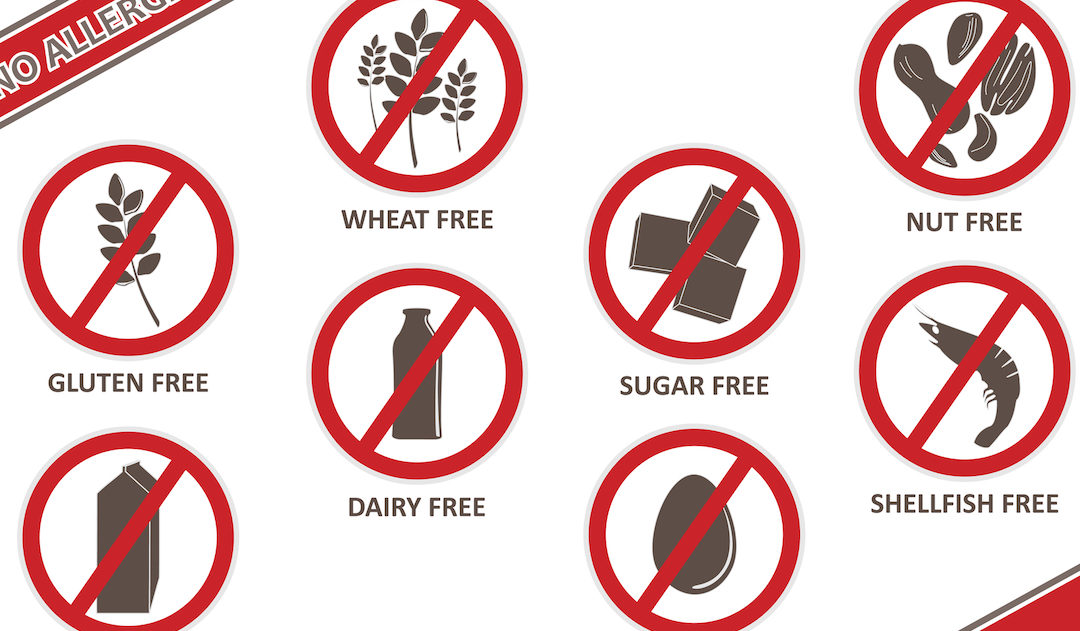Of the five people in our house, at one point in time, there has been at least one person who is either dairy free, gluten-free, lactose intolerant, or a vegetarian. Currently, I’m cooking for one vegetarian, someone who is gluten free, and a different person with a dairy allergy. Those are just my kids. Once they’re all out of the house, my husband and I will be eating at restaurants without looking at the menu beforehand! What a dream!
This post isn’t about the causes of food sensitivities or allergies. I’ll leave that to people much smarter than me. What I wanted to write about is the challenges that can come from trying to cook homemade meals when you have dietary restrictions in your house.
Typically, I’ll start with a core meal, then vary side dishes or one ingredient to accommodate everyone. I cook with a lot of quinoa and brown rice to accommodate the gluten free kid. We eat a lot of soups and then serve bread on the side with a gluten free option. I serve meat on the side as an add-in to accommodate the vegetarian, and then I have found some tricks to make nearly any recipe dairy free. Granted, I’m not cooking much lasagna or dishes with a lot of cheese and heavy cream in them, because I feel like the dairy free options don’t work that well when it comes to taste. But here are some examples of what I do…
- Cook fajitas and make the meat easy to pull out, then serve toppings on the side with corn tortillas or corn chips instead of/in addition to flour tortillas.
- Cook macaroni and cheese from scratch using gluten free pasta. Once the pasta is cooked, pull some for the dairy allergy, then finish it for the rest of us. I’ll add some dairy-free butter and milk with a little salt and pepper to the plain pasta and call it good.
- Cook any breads/muffins/donuts with gluten free flour and alternative milk/butter of choice. I prefer almond or soy milk, but coconut milk works well, also.
- When I really want to make a dish that has meat incorporated, I’ll have some quick-fix options for my vegetarian on hand so that she can quickly put her own dinner together. I’ll warn her earlier in the day that she needs to prepare her own dinner that night. She is a wizard in the kitchen and is always excited to create her own meal.
Some great pantry/refrigerator staples I keep on hand are:
- Tofu
- Almond milk
- Country Crock Plant Based butter sticks
- Canned beans in a variety of types
- Nut Butters
- Bobo Chocolate Chip bars
- LaraBars in a variety of flavors
- Corn tortilla chips
- Corn tortillas – these are my favorite
- Daiya Dairy Free Slices
- Boca Patties
- Enjoy Life Chocolate Chips
- Nestle Simply Delicious Chocolate Chips
Some recipe conversion tips I’ve found:
- Alternative milks and butters are a 1:1 ratio
- Stick with flavorless milk substitutes unless you want that flavor in your foods. For example, don’t cook with vanilla soy milk unless you want your food to taste like vanilla.
- When cooking with gluten free bread, add 1/4 tsp. xanthan gum for each 1/4 cup of gluten free flour, unless you use Bob’s Red Mill 1-to-1 Baking Flour.
- Dairy free butters do not work in all recipes for desserts. I wouldn’t suggest using them in pie crusts or fudge since they don’t firm up the way that cow butter does.
- Quinoa is a great substitute for wheat germ, but I add shredded coconut to help recipes bind. The added flavor tastes great in baked goods, like my homemade granola bars.
If you’re like me and you’re cooking for a variety of dietary restrictions, know that it can be done! When you feel frustrated and overwhelmed, take a step back, cook something simple and tell everyone to deal with it. 🙂 Happy Cooking!
*This article contains affiliate links*

